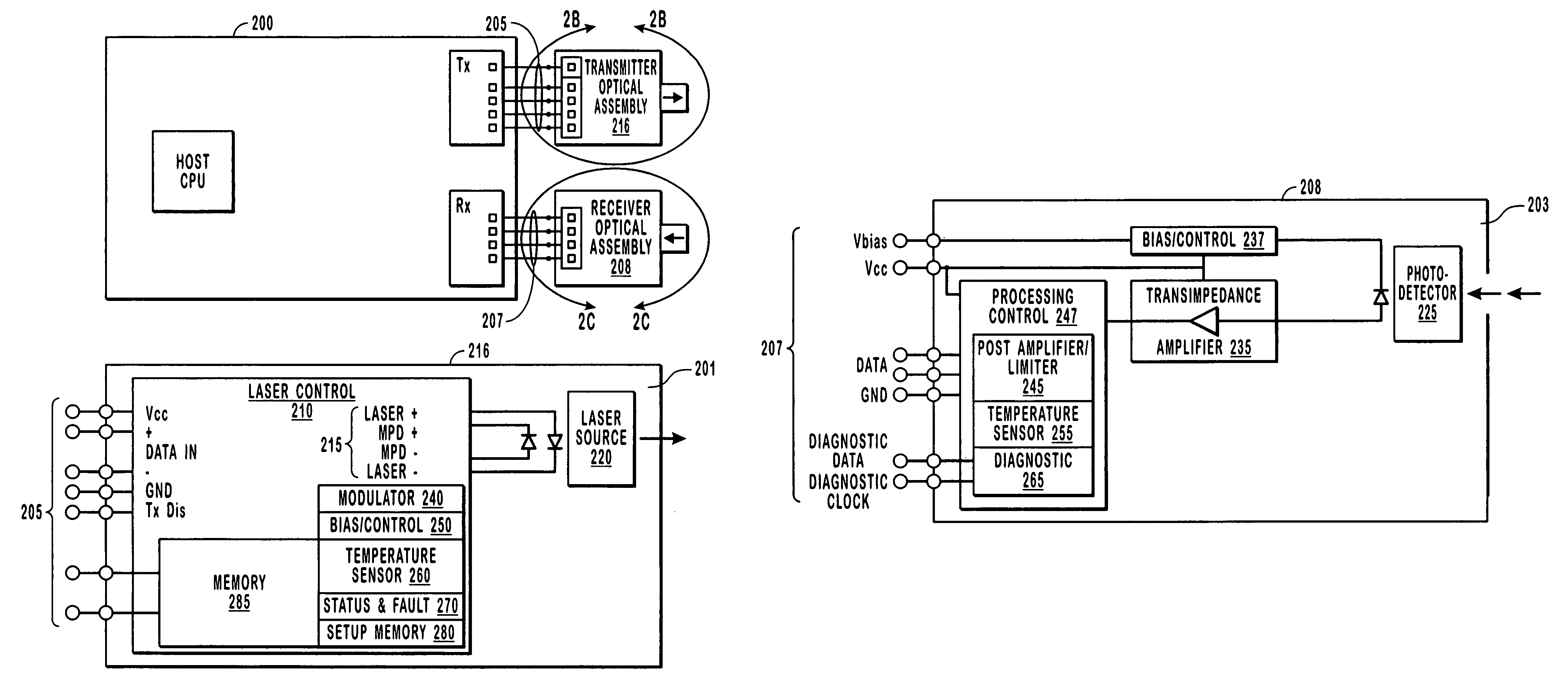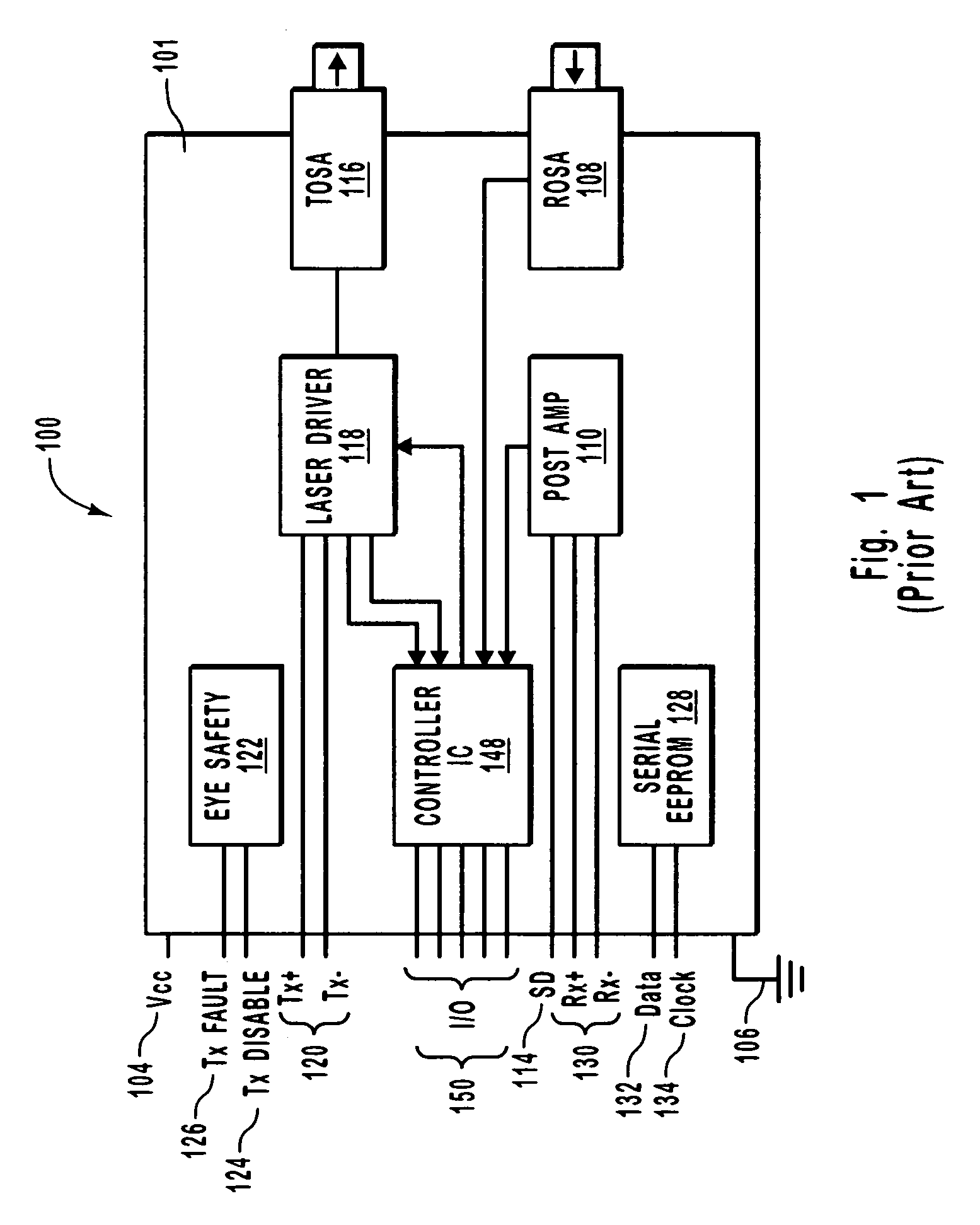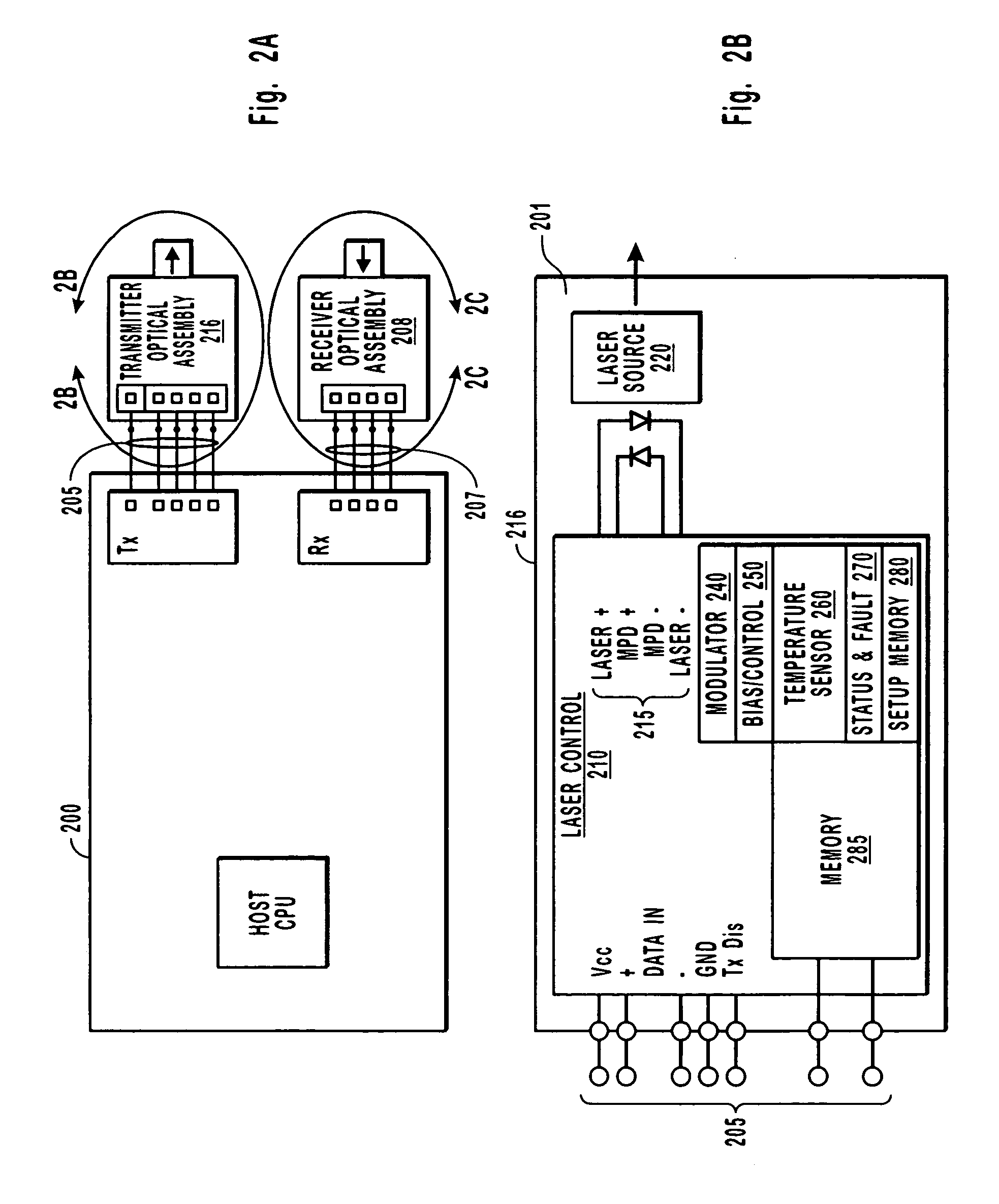Integrated optical assembly
a technology of optical assembly and optical component, applied in the direction of optical elements, optical waveguide light guides, instruments, etc., can solve the problem significance of possible discontinuities on a given conductive pathway, and achieve the effect of reducing the number of electrical discontinuities
- Summary
- Abstract
- Description
- Claims
- Application Information
AI Technical Summary
Benefits of technology
Problems solved by technology
Method used
Image
Examples
Embodiment Construction
[0029]FIG. 2A illustrates a schematic overview for practicing at least one embodiment of the present invention. In contrast with the prior art shown in FIG. 1, FIG. 2A shows a direct connection between an optical assembly such as a transmitter assembly 216 or a receiver assembly 208 and a host 200. In particular, the present invention can allow total removal of a transmitter, receiver, or transceiver IC component since much or all of the active and / or passive circuitry otherwise used to drive a respective transmitter, receiver, or transceiver IC optical component is placed substantially within what would otherwise be the TOSA, ROSA, or combined OSA.
[0030]Accordingly, the term TOSA, ROSA, or OSA is not limited to a “subassembly” that is mounted on an IC, such as a transceiver IC, etc. For example, in some cases the specific optical component may or may not be separately “sub-assembled”, such as onto a transmitter, receiver, or combination transmitter / receiver substrate IC. Thus, for ...
PUM
 Login to View More
Login to View More Abstract
Description
Claims
Application Information
 Login to View More
Login to View More - R&D
- Intellectual Property
- Life Sciences
- Materials
- Tech Scout
- Unparalleled Data Quality
- Higher Quality Content
- 60% Fewer Hallucinations
Browse by: Latest US Patents, China's latest patents, Technical Efficacy Thesaurus, Application Domain, Technology Topic, Popular Technical Reports.
© 2025 PatSnap. All rights reserved.Legal|Privacy policy|Modern Slavery Act Transparency Statement|Sitemap|About US| Contact US: help@patsnap.com



